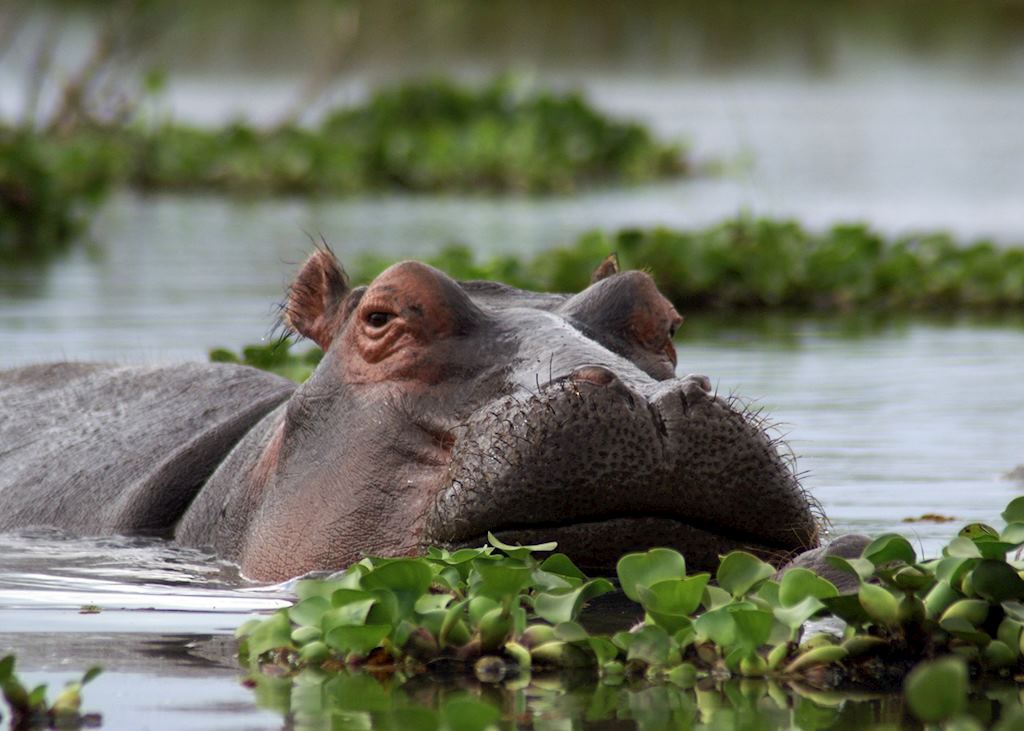Written by Alex
Africa Safari Specialist
As Zambia celebrates 50 years of independence, Brian Jackman explains why a safari through this wild, utterly unspoilt country is Africa as it used to be.
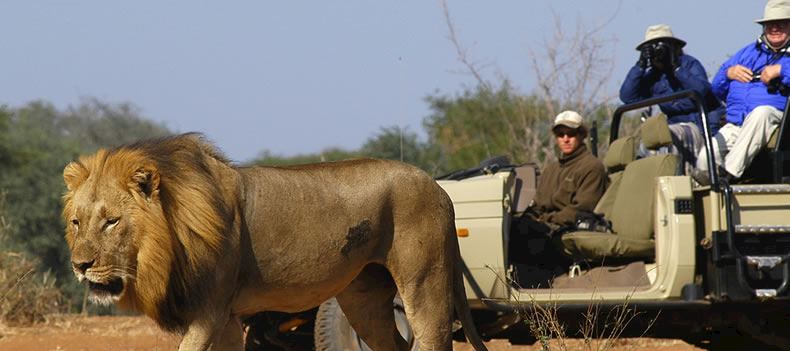
About Brian Jackman
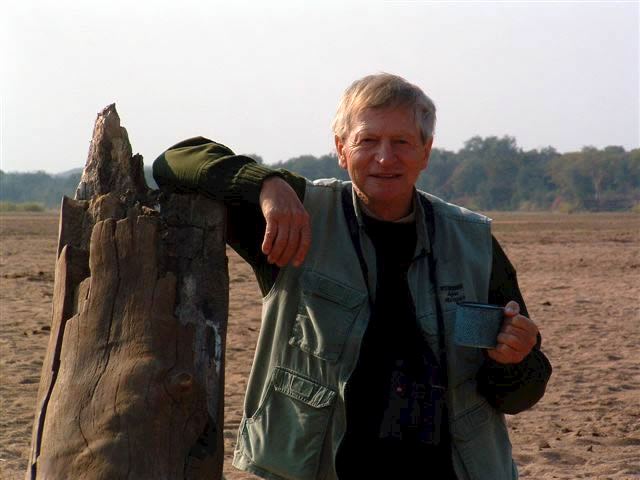 Brian Jackman travelled to Zambia with Audley. He is a freelance journalist with a lifelong passion for the natural world. He is also co-author (with Jonathan Scott) of The Marsh Lions, first published in 1982 and now acclaimed as a wildlife classic.
Brian Jackman travelled to Zambia with Audley. He is a freelance journalist with a lifelong passion for the natural world. He is also co-author (with Jonathan Scott) of The Marsh Lions, first published in 1982 and now acclaimed as a wildlife classic.
The more often I go to Zambia the more I can feel my old allegiance to East Africa beginning to wobble. Seldom have I felt happier than when arriving in this friendliest of countries, whose owner-run camps are among the best in the business, as are the professional guides who will lead you on the best walking safaris money can buy.
Zambia is Africa as it used to be: wild, vast and relatively unchanged. While neighbouring countries have been rocked by turmoil, Zambia has been quietly following its own way forward, avoiding the headlines and showing the world how — given half a chance — nature comes bouncing back to reclaim its own. One third of the country is national parkland and over the years I have seen the best of it.
Kafue National Park
In Kafue, Zambia’s oldest and biggest park, I spent an enthralling week at Busanga Bush Camp following Busanga’s famous tree-climbing lion across a half-drowned landscape of endless grasslands filled with zebra, antelope and bugling cranes.
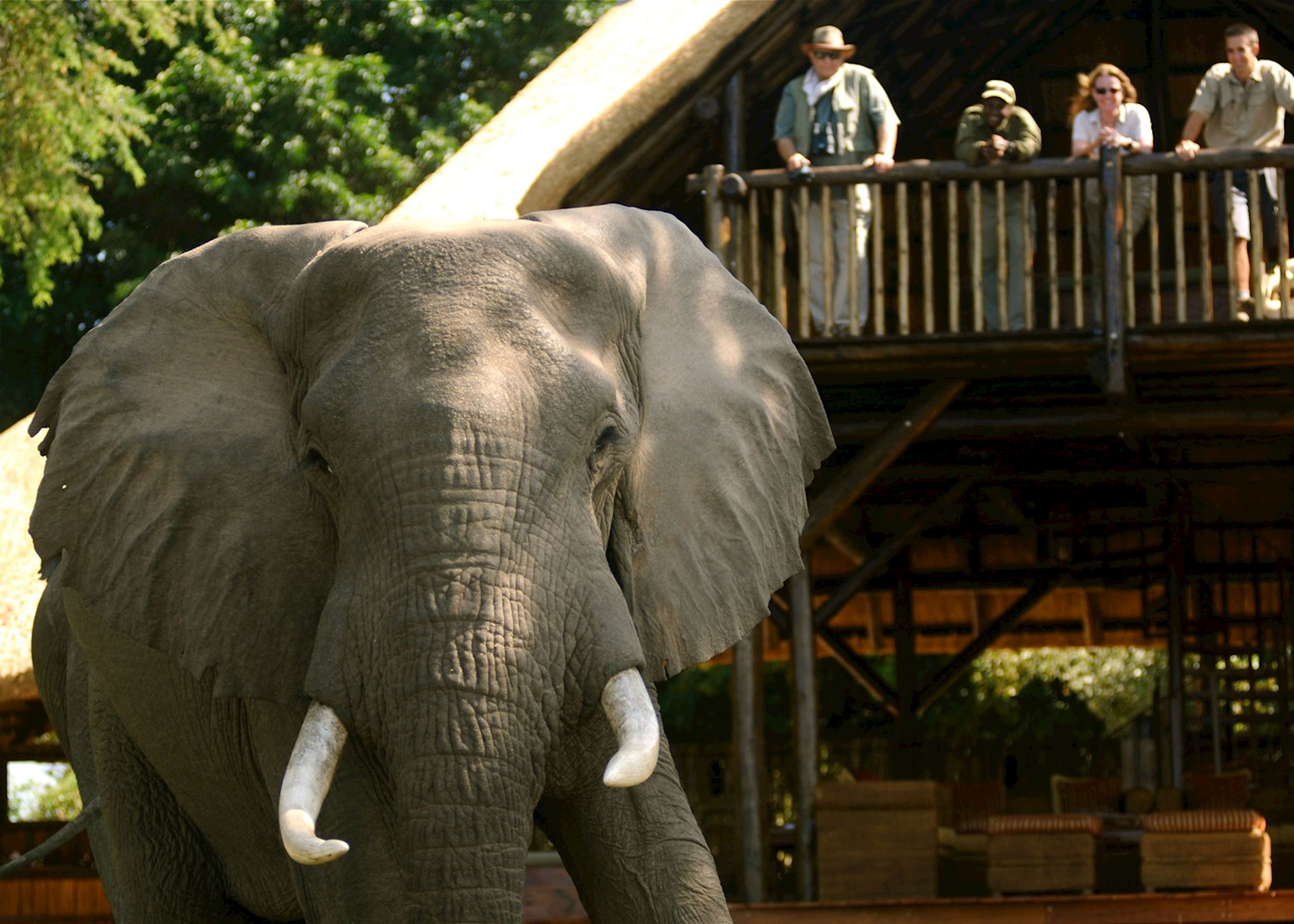 At Chiawa, an idyllic camp on the banks of the Lower Zambezi, I set out with Grant Cumings, its bush-wise owner, to catch tiger-fish in the mile-wide river. For Grant, who loves the Lower Zambezi with a passion, there is nowhere he would rather be. ‘Real in-your-face Africa’, is how he describes it — big skies, big trees, big elephants.
At Chiawa, an idyllic camp on the banks of the Lower Zambezi, I set out with Grant Cumings, its bush-wise owner, to catch tiger-fish in the mile-wide river. For Grant, who loves the Lower Zambezi with a passion, there is nowhere he would rather be. ‘Real in-your-face Africa’, is how he describes it — big skies, big trees, big elephants.
But the one place that draws me back again and again is the incomparable Luangwa Valley, an immense offshoot of the Great Rift Valley. It is so wide that only on the clearest days can you see the dim blue outline of the Muchinga Escarpment that marks its western limits, and every mile is filled with wildlife.
South Luangwa National Park
The best of it lies within the South Luangwa National Park, a huge wilderness area. This major tributary of the mighty Zambezi is one of Africa’s last untamed waterways — 500 miles of hippo pools and muddy brown channels framed by dark ebony groves where rare Pel’s fishing owls wait for nightfall.
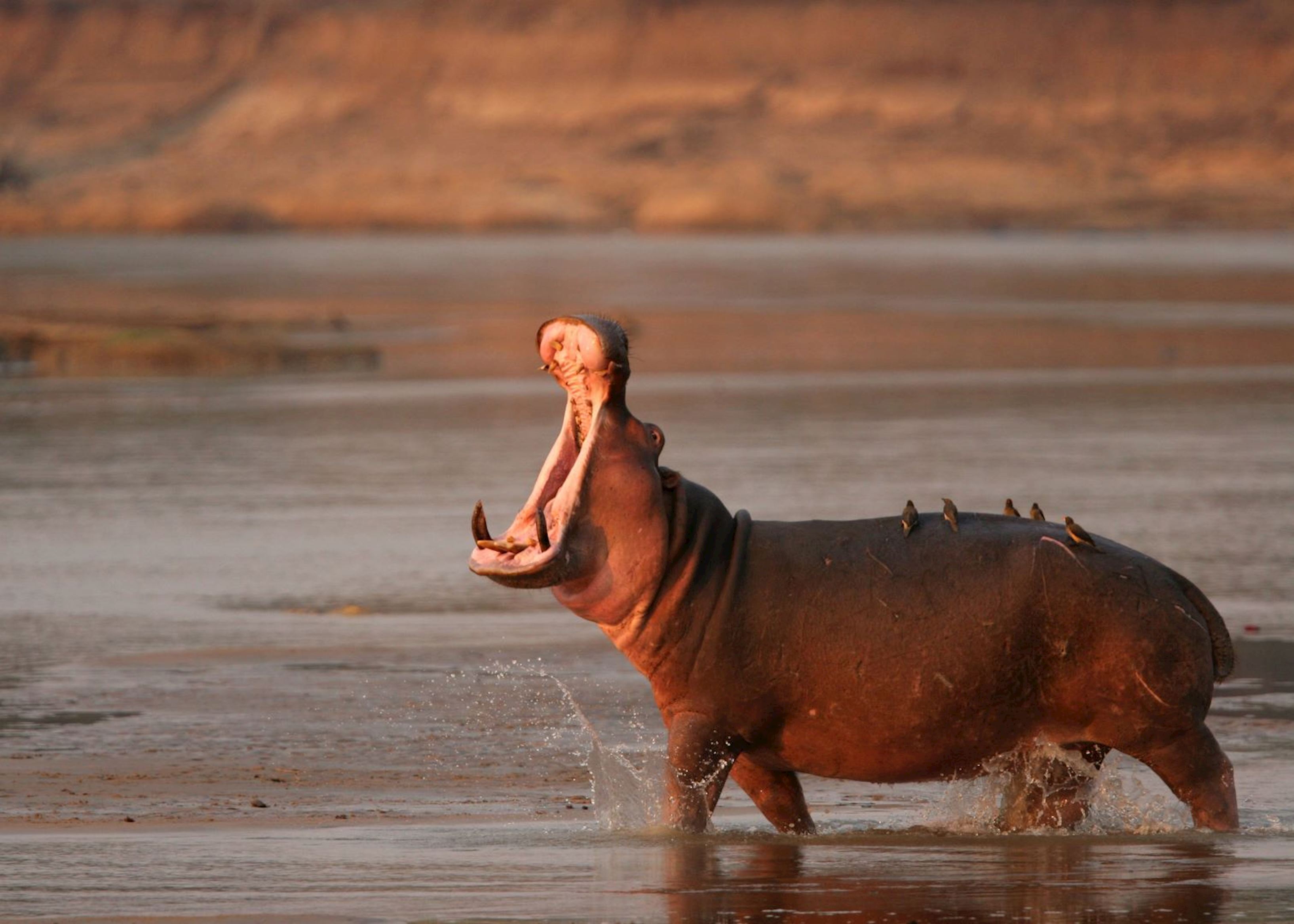 In the dry season it flows sluggishly beneath 15 ft-high banks, sliding past sandbars on which crocodiles bask with jaws agape. When the green season kicks in the river bursts its banks, replenishing its flood plains and oxbow lagoons. At all times it is the valley’s lifeblood, supporting 450 bird species and 60 different kinds of mammals including some you won’t see elsewhere, such as Thornicroft’s giraffe.
In the dry season it flows sluggishly beneath 15 ft-high banks, sliding past sandbars on which crocodiles bask with jaws agape. When the green season kicks in the river bursts its banks, replenishing its flood plains and oxbow lagoons. At all times it is the valley’s lifeblood, supporting 450 bird species and 60 different kinds of mammals including some you won’t see elsewhere, such as Thornicroft’s giraffe.
Of course, everyone comes to see the animals, but South Luangwa is also renowned for its woodlands. Here, growing beside the river you will find magnificent stands of leadwoods and tamarinds, rain trees and sausage trees, strangler figs, Natal mahogany and ancient baobabs older than London.
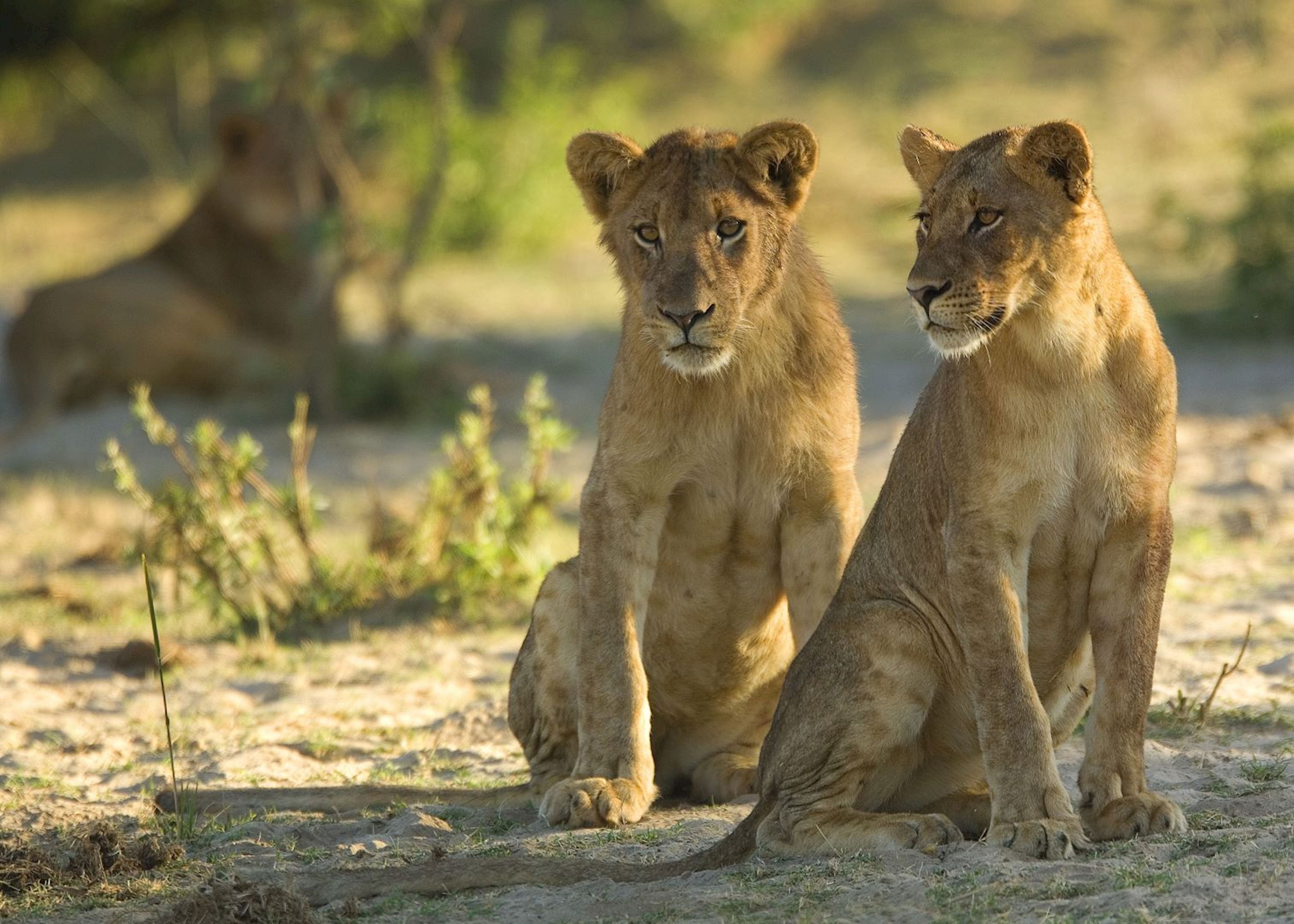 No matter what time it is the valley acts as a gigantic sounding board that magnifies every noise, from the non-stop chorus of a million doves to the booming of ground hornbills and the yelping cries of African fish eagles. From dawn to dusk the air resonates with the harrumph of hippos, and at night when the Luangwa lions roar you can hear them five miles away.
No matter what time it is the valley acts as a gigantic sounding board that magnifies every noise, from the non-stop chorus of a million doves to the booming of ground hornbills and the yelping cries of African fish eagles. From dawn to dusk the air resonates with the harrumph of hippos, and at night when the Luangwa lions roar you can hear them five miles away.
Listen, too, for the hacksaw cough of prowling leopard. Luangwa is the best place I know for finding these normally elusive big cats; their tracks are everywhere. Last year I saw seven leopard in a week, including a male called Kataba (One-Eye), and watched another for two hours as it stalked impala on the Puku Ridge floodplains.
 Out on the floodplains life and death were all around us. One day, while photographing a party of yellow-billed storks spearing catfish in a rapidly drying lagoon, we spotted a martial eagle as it snatched a guinea fowl and carried it into a nearby tree where it proceeded to tear it apart until only the bony legs remained.
Out on the floodplains life and death were all around us. One day, while photographing a party of yellow-billed storks spearing catfish in a rapidly drying lagoon, we spotted a martial eagle as it snatched a guinea fowl and carried it into a nearby tree where it proceeded to tear it apart until only the bony legs remained.
On another game drive we watched a leopard stash an impala carcass in a Natal mahogany, then return to the ground where it hid in a sweet-smelling wild jasmine bush while wood doves sang in the air. And afterwards, driving back to camp in the golden light of late afternoon, we found four wild dogs strewn like scatter cushions across the dusty road, and stayed with them until at last they rose and stretched and then set off to hunt, vanishing into the fathomless bush.
Night-time game drives
 South Luangwa is among the few parks in Africa where night drives are allowed, and we found the dogs again the following evening being harassed by hyenas, flitting in and out of our spotlight in a kind of wild ballet conducted in total silence. The dogs had killed. Their bellies were distended and there was blood on the chest fur.
South Luangwa is among the few parks in Africa where night drives are allowed, and we found the dogs again the following evening being harassed by hyenas, flitting in and out of our spotlight in a kind of wild ballet conducted in total silence. The dogs had killed. Their bellies were distended and there was blood on the chest fur.
Was that why the hyenas were following them? Or was there a more sinister motive? Maybe they were intent on tracking the dogs back to their den somewhere deep in the mopane woodlands, where they would regurgitate the meat for their puppies? But eventually we lost them in thick bush and never did find out.
Accommodation
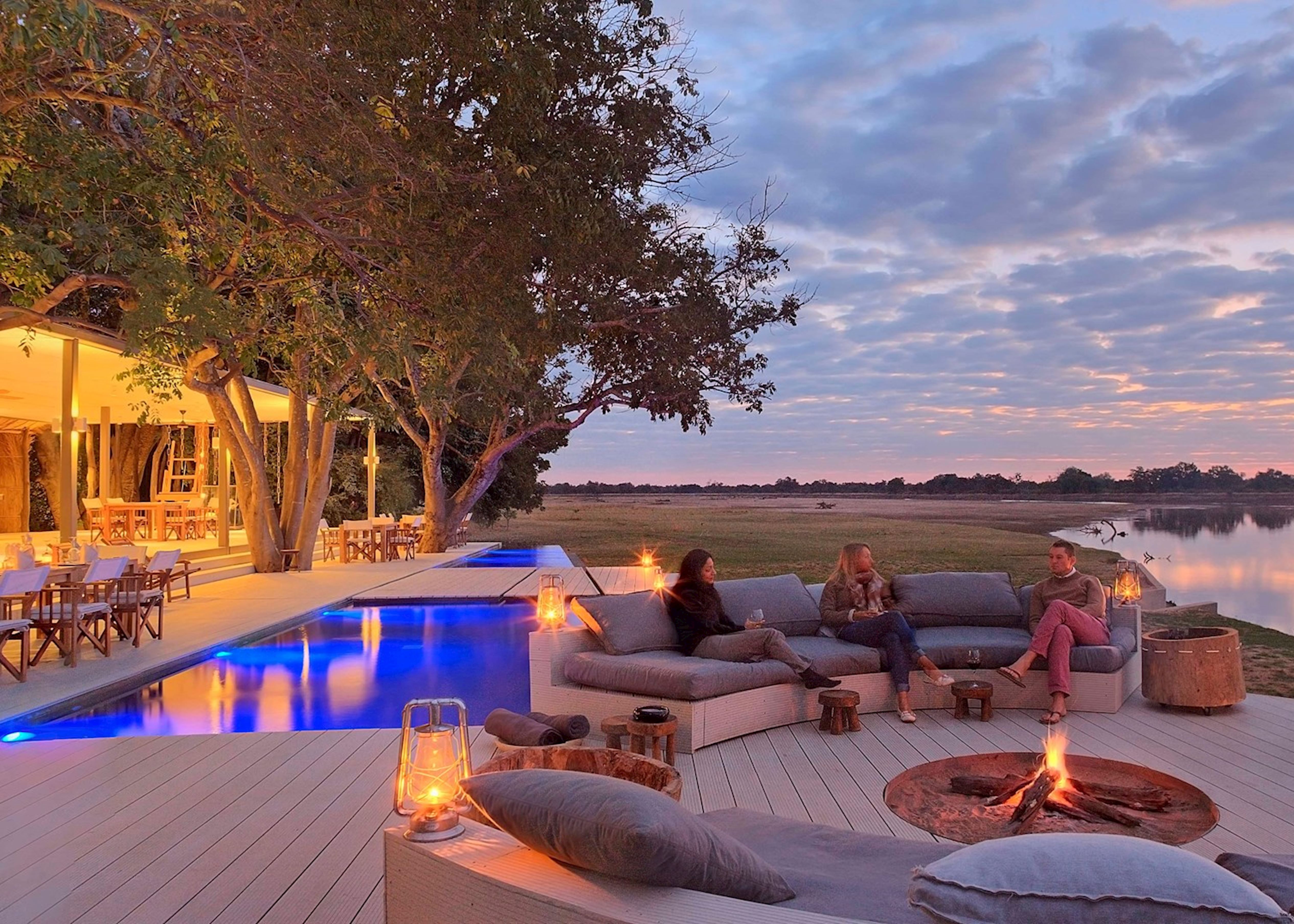 The smartest address in the valley is Chinzombo, the flagship lodge of Norman Carr Safaris. Designed by architects Silvio Rech and Lesley Carstens, whose previous creations include Ngorongoro Crater Lodge in Tanzania and North Island in the Seychelles, there is nothing else like it in Zambia.
The smartest address in the valley is Chinzombo, the flagship lodge of Norman Carr Safaris. Designed by architects Silvio Rech and Lesley Carstens, whose previous creations include Ngorongoro Crater Lodge in Tanzania and North Island in the Seychelles, there is nothing else like it in Zambia.
Here, on the banks of the Luangwa River, shaded by a grove of Natal mahogany trees, are six ultra-modern villas, each with a private plunge pool, and a bar adorned with blow-up photos of Norman Carr himself, the legendary Zambian game warden, with Big Boy and Little Boy, the two lions he adopted and returned to the wild.
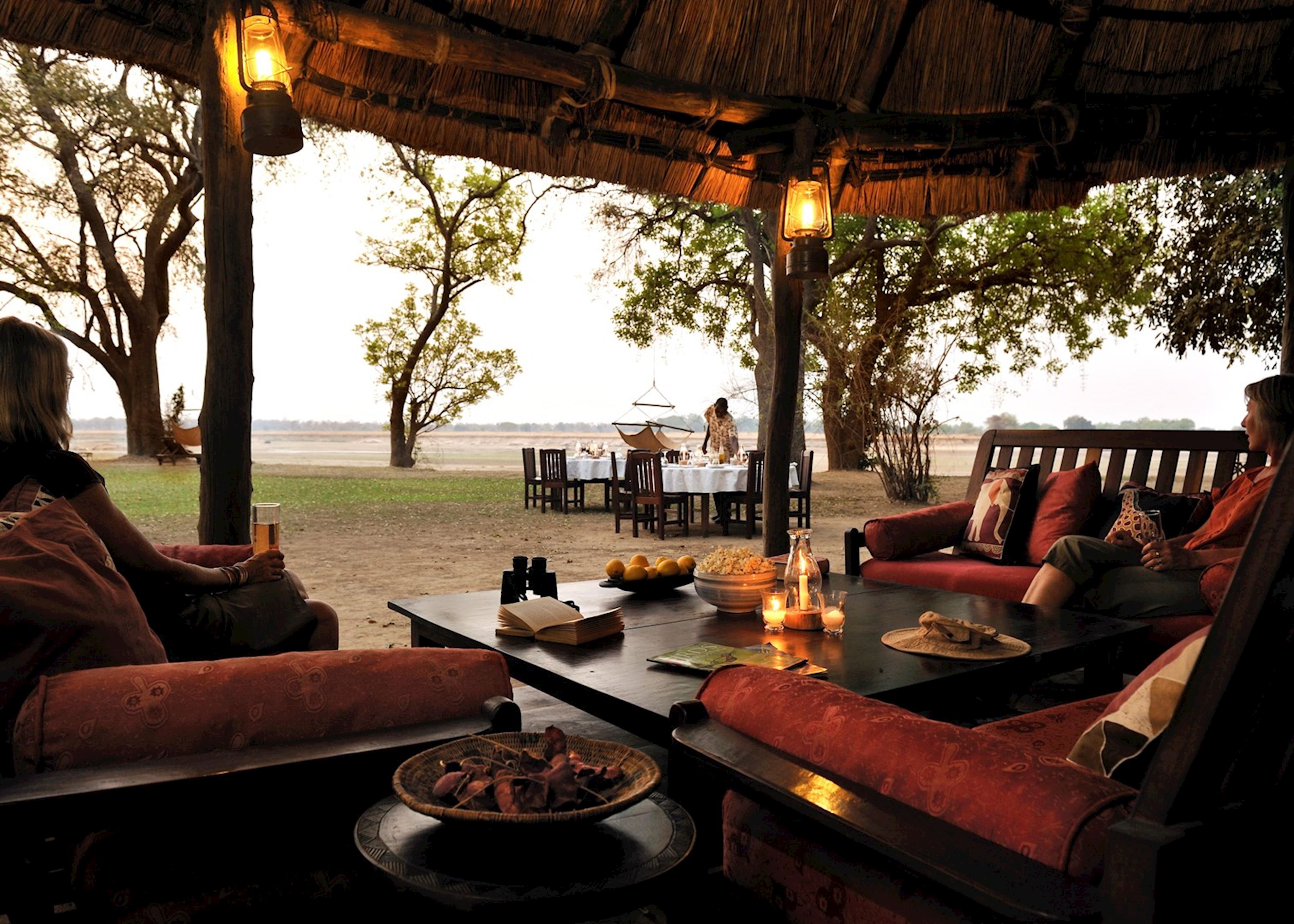 It’s a far cry from the original Chinzombo with its reed walls and bare sand floors; but if its unstinting luxury is all too much for purists it is still possible to combine a stay here with a traditional back-to-nature bush camp. The Norman Carr Safaris portfolio has four to choose from, including the wildly romantic Luwi Bush Camp overlooking the Luwi Sand River, or Tafika, the home of John and Carol Coppinger whose company, Remote Africa Safaris, has been operating here since the mid-1990s.
It’s a far cry from the original Chinzombo with its reed walls and bare sand floors; but if its unstinting luxury is all too much for purists it is still possible to combine a stay here with a traditional back-to-nature bush camp. The Norman Carr Safaris portfolio has four to choose from, including the wildly romantic Luwi Bush Camp overlooking the Luwi Sand River, or Tafika, the home of John and Carol Coppinger whose company, Remote Africa Safaris, has been operating here since the mid-1990s.
Walking safaris
It was Norman Carr who re-invented the idea of walking safaris after a lifetime spent mostly in the Luangwa Valley, and it was he who gave me my baptism in bush bashing on my first visit there in 1978.
![]() Today the Luangwa’s most distinguished walking safari guide is Phil Berry, a former game-ranger colleague of Norman Carr who reckons he must have clocked up more than 75,000 miles on foot during his 50 years in the valley.
Today the Luangwa’s most distinguished walking safari guide is Phil Berry, a former game-ranger colleague of Norman Carr who reckons he must have clocked up more than 75,000 miles on foot during his 50 years in the valley.
Much of that time was spent chasing poachers in a courageous but ultimately hopeless attempt to save Luangwa’s black rhinos, and that was how we first met, when he invited me to accompany him on an anti-poaching patrol back in 1983.
Nowadays, with Babette Alfieri, his American partner, he runs Kuyenda, an idyllic little bush camp on the banks of the Manzi Sand River, where we met up again last year. When he suggested a walk in the bush I jumped at the chance. There were just four of us when we set out next morning. In front was Isiah Nyirenda, our rifle-toting game scout dressed in green combat fatigues. Then came Berry himself, followed by Damasco the tea-bearer and me.
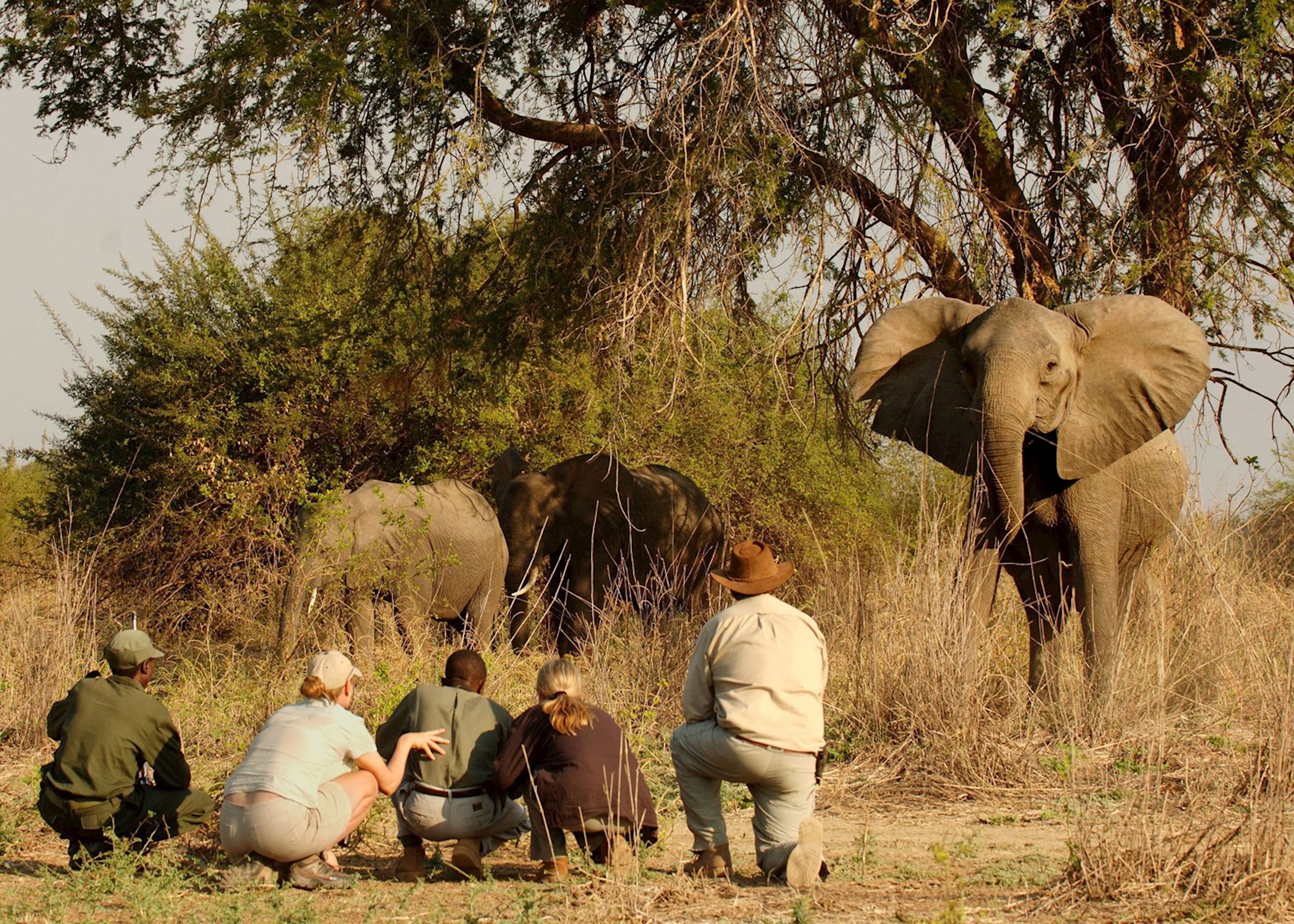 We walked in silence, keeping close together, stopping now and then while Berry translated the calligraphy of fresh tracks left overnight in the dust, and in a little while we came to the Manzi Springs, a haven for puku that bounded away at our approach.
We walked in silence, keeping close together, stopping now and then while Berry translated the calligraphy of fresh tracks left overnight in the dust, and in a little while we came to the Manzi Springs, a haven for puku that bounded away at our approach.
On we strode, following beaten-down elephant paths across a plain where stunted mopane trees stood, like a derelict orchard.
Under the trees it was as quiet as a church, the silence broken only by the fluting calls of black-collared barbets.
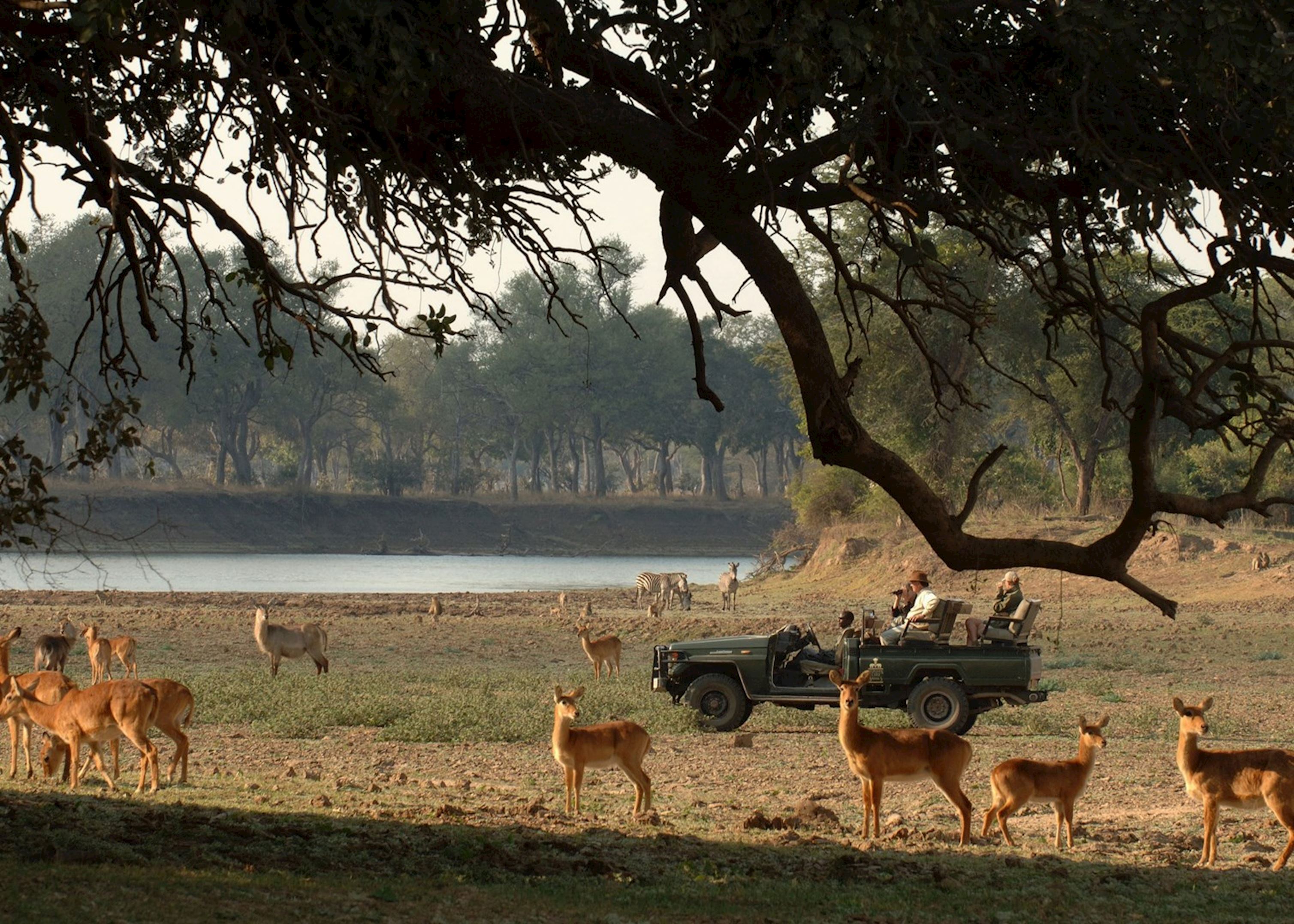 Here I rested in the shade, seated on a fallen leadwood while Phil handed round tea and muffins before heading leisurely back to camp.
Here I rested in the shade, seated on a fallen leadwood while Phil handed round tea and muffins before heading leisurely back to camp.
Apart from our brief encounter with the elephant it had been an uneventful morning.
Yet, far from the tyranny of roads, surrounded by the sounds and scents of Africa and accompanied by one of its most respected safari guides, it summed up everything that is special and magical about spending time in this peerless Zambian wilderness.
About Kafue National Park
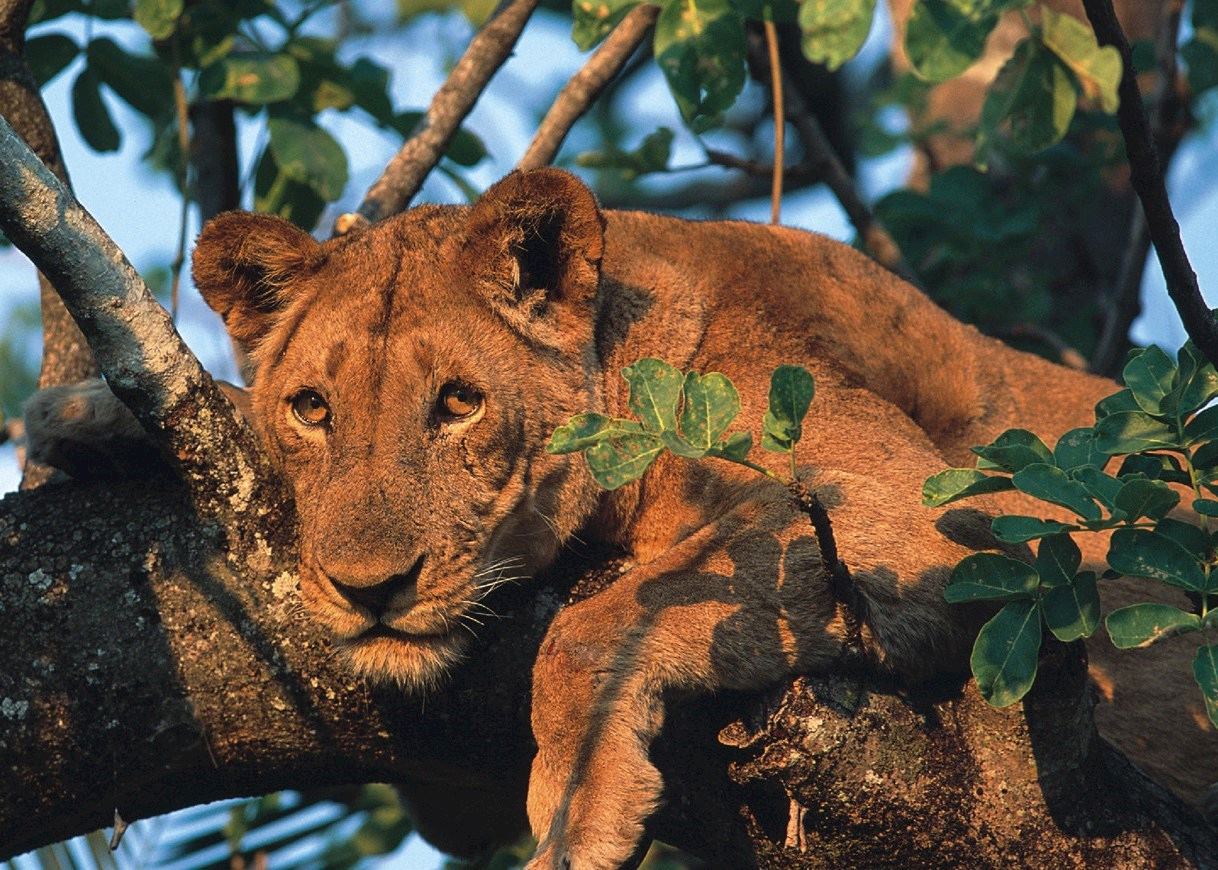 The second-largest national park in Africa, the Kafue National Park covers an enormous 22,400 square kilometres and boasts at least 55 different species of animal. Still relatively undiscovered and totally unspoilt, the Kafue offers something truly spectacular for experienced safari-goers and newcomers alike.
The second-largest national park in Africa, the Kafue National Park covers an enormous 22,400 square kilometres and boasts at least 55 different species of animal. Still relatively undiscovered and totally unspoilt, the Kafue offers something truly spectacular for experienced safari-goers and newcomers alike.
The central Kafue area focuses activities around the stunning river scenery; a few days here is for relaxing on a boat cruise, or enjoying game drives and walks while soaking up the sights and sounds around you. Further north you enter the vast Busanga Plains, 750 square kilometres of grassland and swamp that is only accessible in the dry season from July to October.
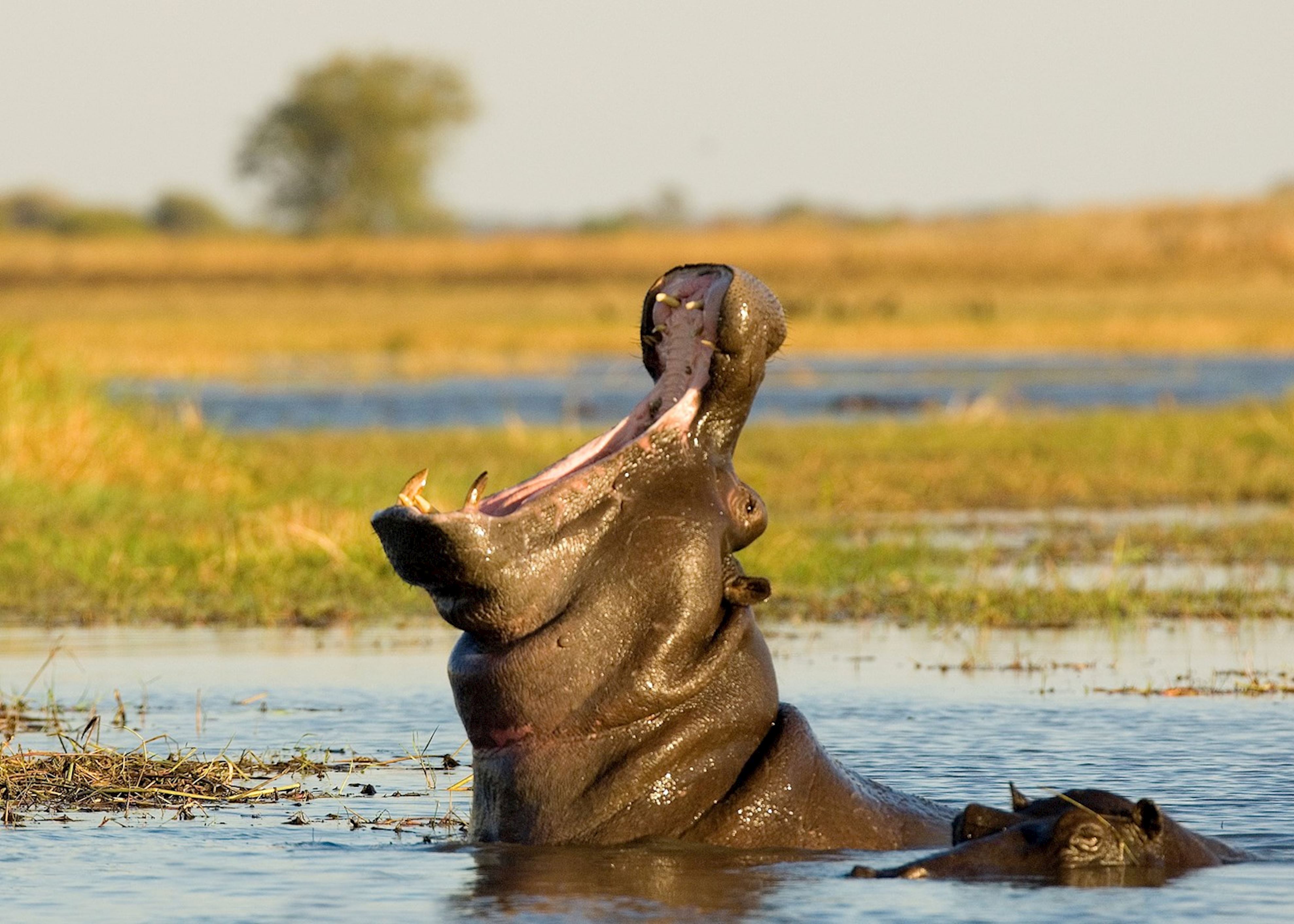 It is on these plains that you are likely to see large herds of antelope, including roan and sable, wild dog, the famous tree-climbing lions, leopard and even cheetah. There is only a handful of camps to choose from in Busanga, making it a truly exclusive and unique experience.
It is on these plains that you are likely to see large herds of antelope, including roan and sable, wild dog, the famous tree-climbing lions, leopard and even cheetah. There is only a handful of camps to choose from in Busanga, making it a truly exclusive and unique experience.
The Kafue National Park is easily combined with Zambia’s other parks, or is a fantastic destination in its own right. It’s not to be missed by those wanting to experience the very best of Zambia.
Tailor-made itinerary ideas in Zambia
-
![Elephants crossing the Luangwa River, South Luangwa National Park]()
Victoria Falls, Luangwa & Lower Zambezi safari
This trip makes for an excellent introduction to the area, encompassing some of Zambia's best game viewing and a short stay in Zimbabwe at Victoria Falls.
-
![Lioness and roan antelope, Busanga region, Kafue National Park]()
Secrets of Kafue National Park
A three-centre safari exploring the different regions of the Kafue, enjoying walking, boat and game drive safaris.
Was this useful?


